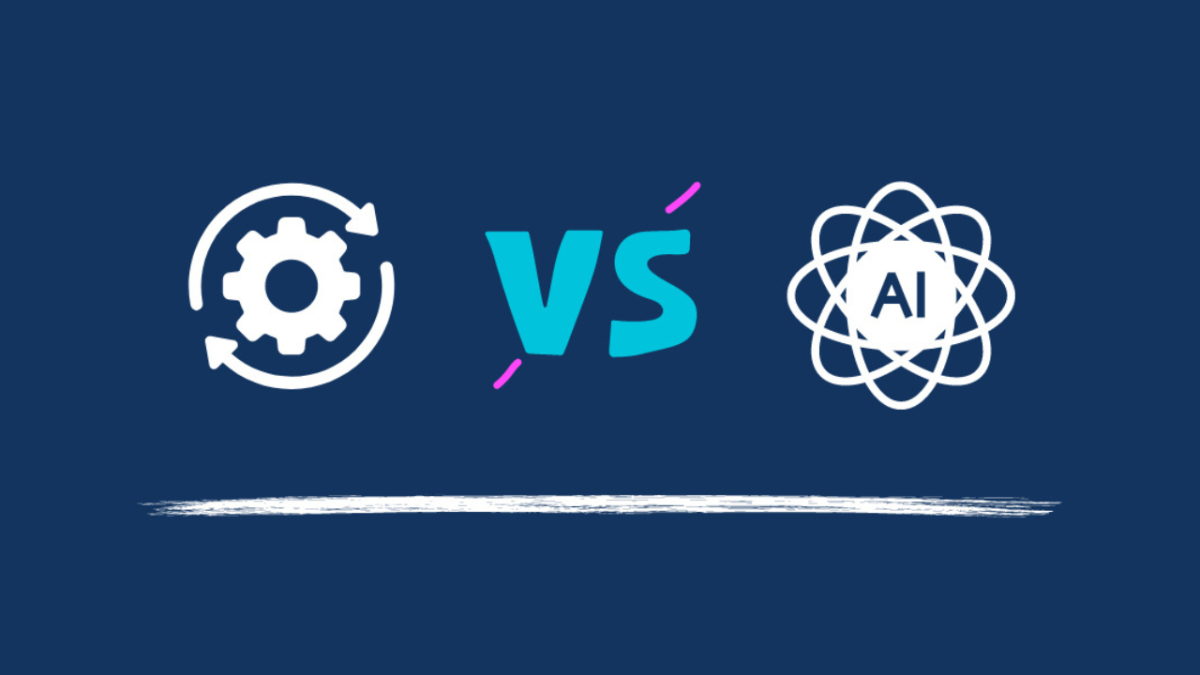Artificial Intelligence (AI) and automation are often used interchangeably, but they are distinct technologies with unique applications. While both play a significant role in optimizing business processes, understanding the difference is crucial to leveraging their capabilities effectively. This article unpacks the definitions, key differences, and practical implications of AI and automation, explaining why these technologies are essential for modern businesses.
What Is Automation?
Automation refers to the use of technology to execute tasks or processes with minimal human intervention. It typically follows predefined rules and workflows to handle repetitive, routine tasks efficiently.
Examples of Automation:
- Automated email responses using tools like Gmail or Mailchimp.
- Scheduling social media posts with platforms like Buffer or Hootsuite.
- Assembly line robotics in manufacturing.
Key Characteristics:
- Rule-based and repetitive.
- Operates in a fixed scope with no decision-making ability.
- Primarily focused on improving efficiency and reducing errors.
What Is Artificial Intelligence (AI)?
Artificial Intelligence, on the other hand, involves machines that simulate human intelligence, learning from data, making decisions, and even solving complex problems. AI goes beyond predefined rules, using algorithms and data analysis to adapt and improve over time.
Examples of AI:
- Chatbots like ChatGPT that understand and respond to queries in natural language.
- Recommendation systems like those on Netflix or Amazon.
- Predictive analytics in business forecasting.
Key Characteristics:
- Data-driven and adaptive.
- Capable of decision-making and problem-solving.
- Continuously improves through machine learning.
Key Differences Between AI and Automation
| Aspect | Automation | Artificial Intelligence (AI) |
|---|---|---|
| Scope | Limited to predefined tasks | Flexible and adaptive |
| Learning Capability | None; rule-based | Learns and improves over time |
| Decision-Making | Follows fixed workflows | Capable of complex decision-making |
| Complexity | Simplifies repetitive tasks | Handles complex, data-intensive processes |
Why the Difference Matters
Understanding the distinction between AI and automation is critical for businesses to apply these technologies strategically. Each serves a unique purpose, and the choice depends on the complexity and goals of the task.
- Improved Efficiency with Automation
Automation is ideal for tasks that are repetitive, predictable, and rule-based. For example, automating payroll processing saves time and eliminates human error. - Driving Innovation with AI
AI excels in handling complex tasks that require learning and adaptation. Businesses can use AI to analyze market trends, personalize customer experiences, and make data-driven decisions. - Combined Applications for Maximum Impact
The real power lies in combining AI and automation. For instance, AI-driven analytics can identify customer patterns, while automation handles email campaigns based on those insights.
Real-Life Applications of AI and Automation
Automation in Action:
- Retail: Automating inventory management to ensure optimal stock levels.
- Healthcare: Scheduling patient appointments automatically based on availability.
AI in Action:
- E-commerce: Recommending products based on past customer behavior.
- Finance: Using AI for fraud detection by analyzing transaction patterns.
Combining Both:
- AI identifies anomalies in financial transactions, while automation freezes compromised accounts instantly.
Choosing the Right Technology for Your Business
When deciding between AI and automation, consider:
- Task Complexity: Use automation for simple, repetitive tasks and AI for more dynamic, data-driven needs.
- Business Goals: Align the technology with your objectives, whether it’s efficiency, scalability, or customer personalization.
- Budget: Automation is typically more cost-effective for smaller tasks, while AI may require a larger upfront investment but delivers significant long-term value.
The Future of AI and Automation
As these technologies continue to evolve, their roles in business will expand:
- Automation: Incorporating more AI-driven logic for smarter workflows.
- AI: Becoming more accessible for small businesses through advancements in low-code platforms.
The convergence of AI and automation will redefine industries, driving innovation and transforming how businesses operate.
Conclusion
AI and automation are powerful tools that can revolutionize how businesses function. While automation handles repetitive tasks with speed and accuracy, AI tackles complex problems with intelligence and adaptability. By understanding their differences and applications, businesses can create strategies that combine the strengths of both, driving efficiency, innovation, and growth.
Now is the time to embrace these technologies, stay competitive, and future-proof your business in an increasingly tech-driven world.
